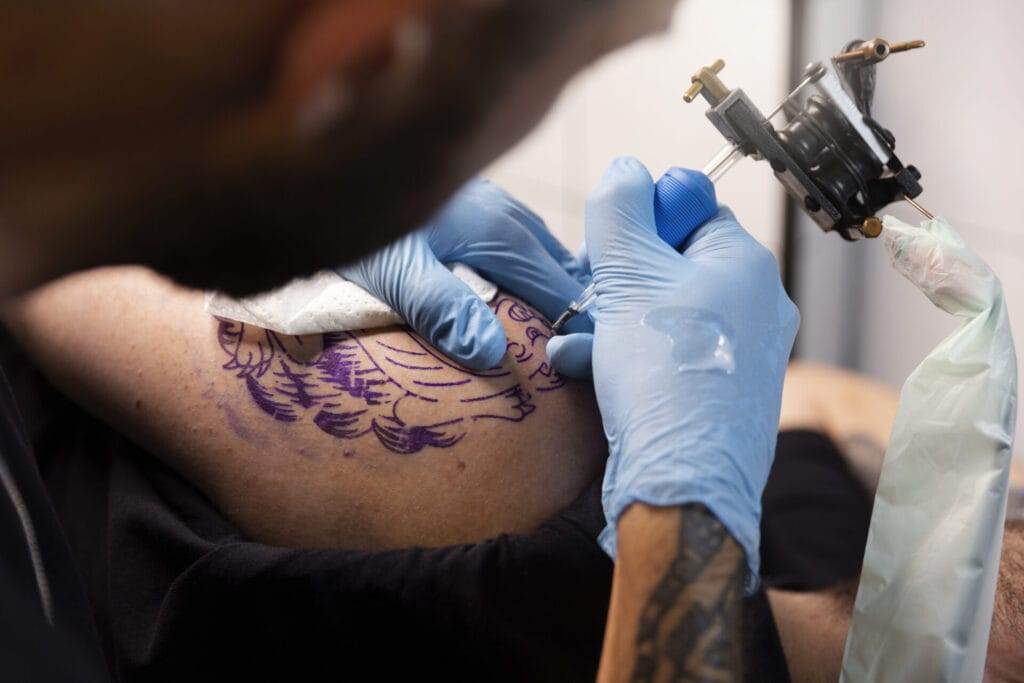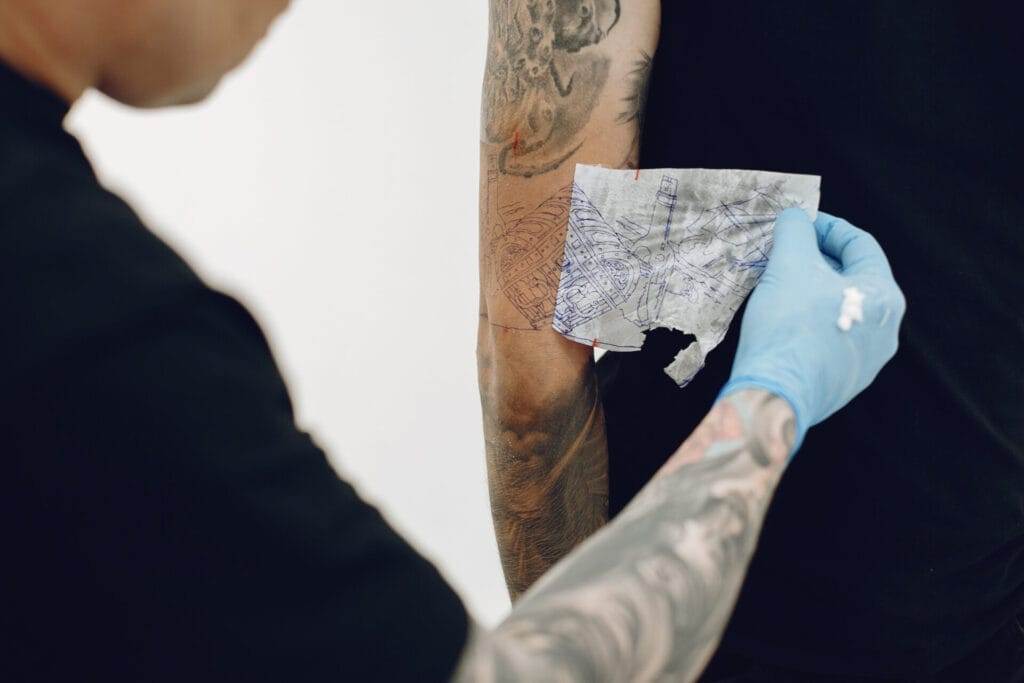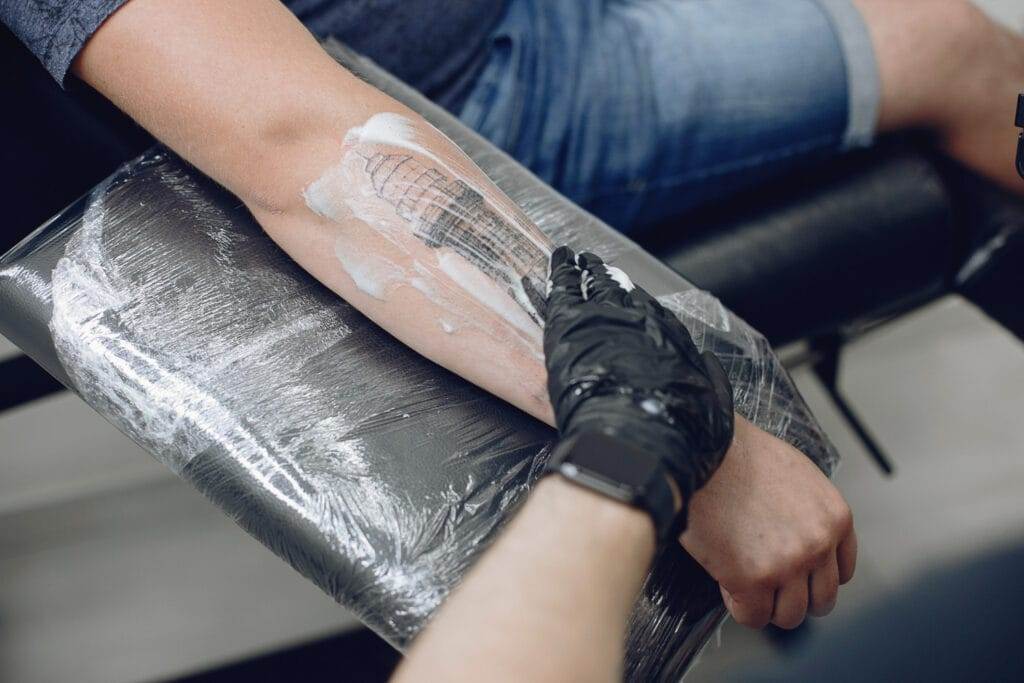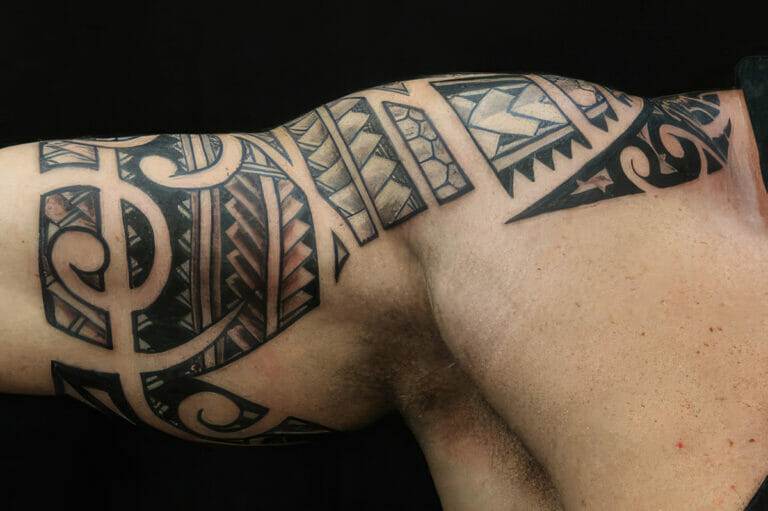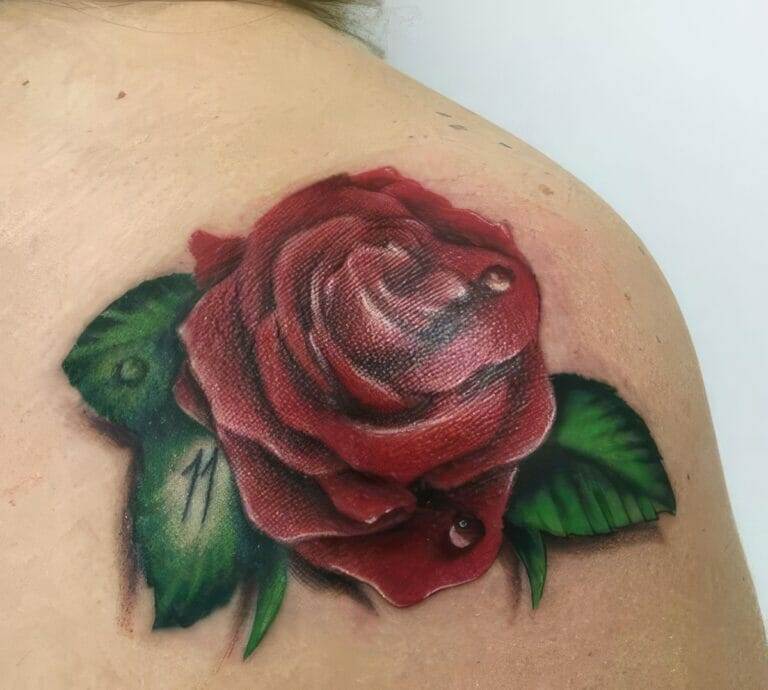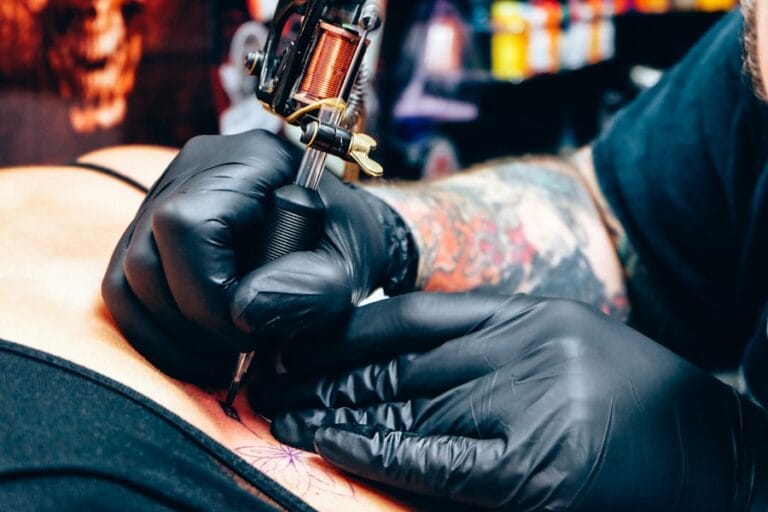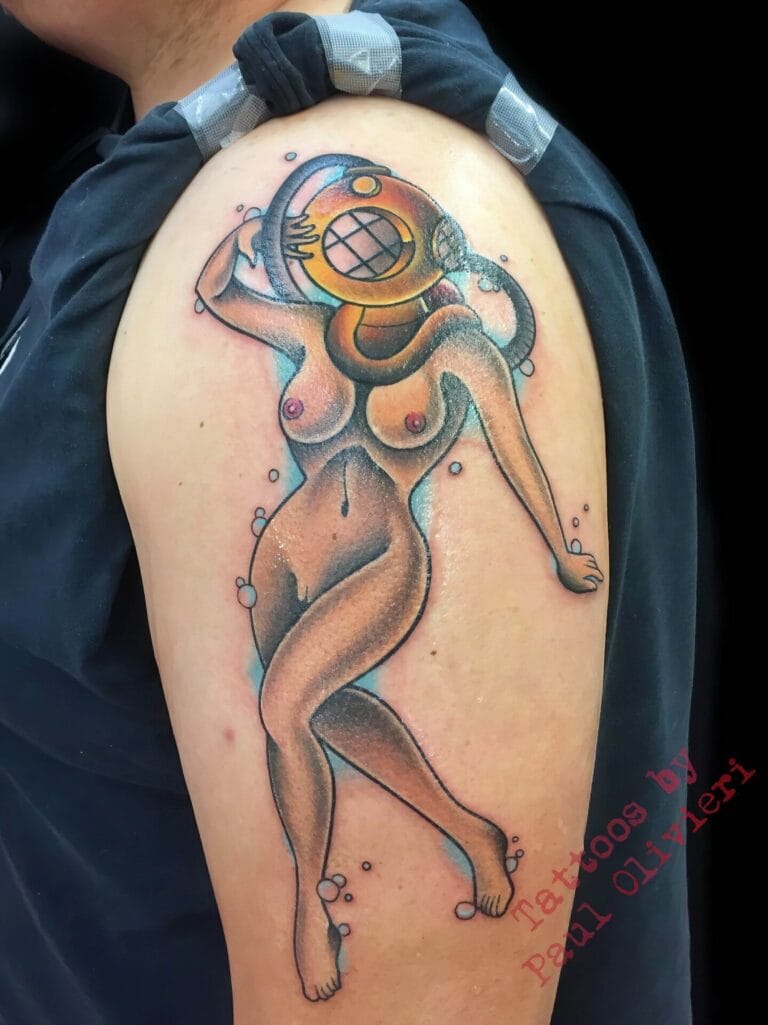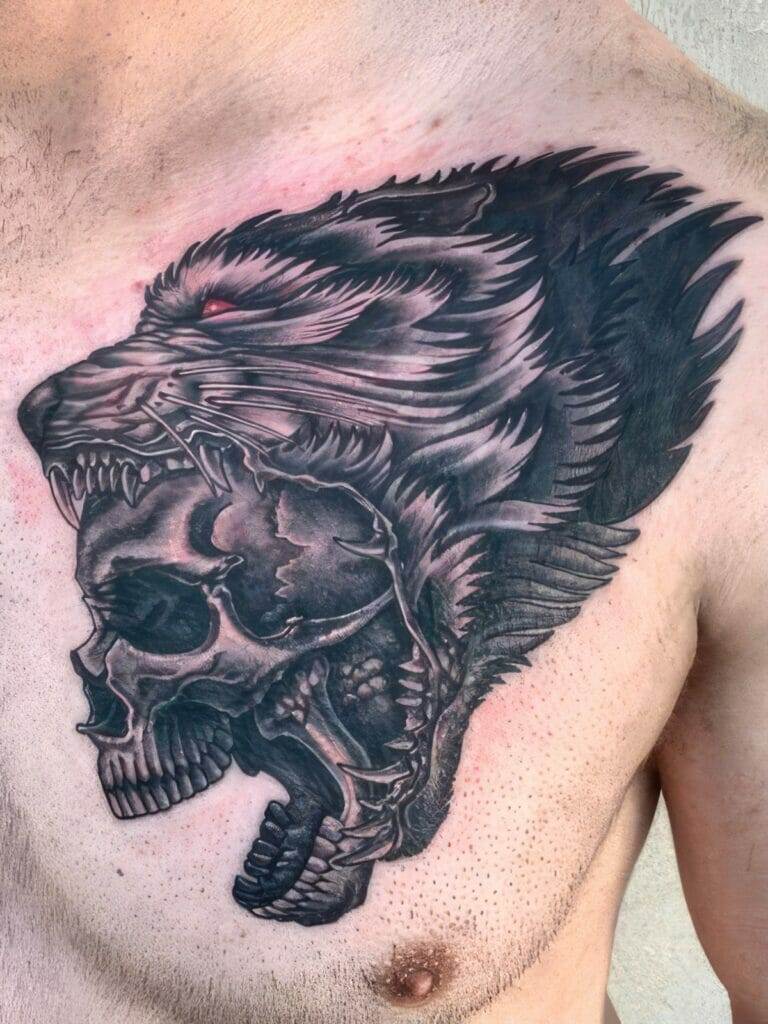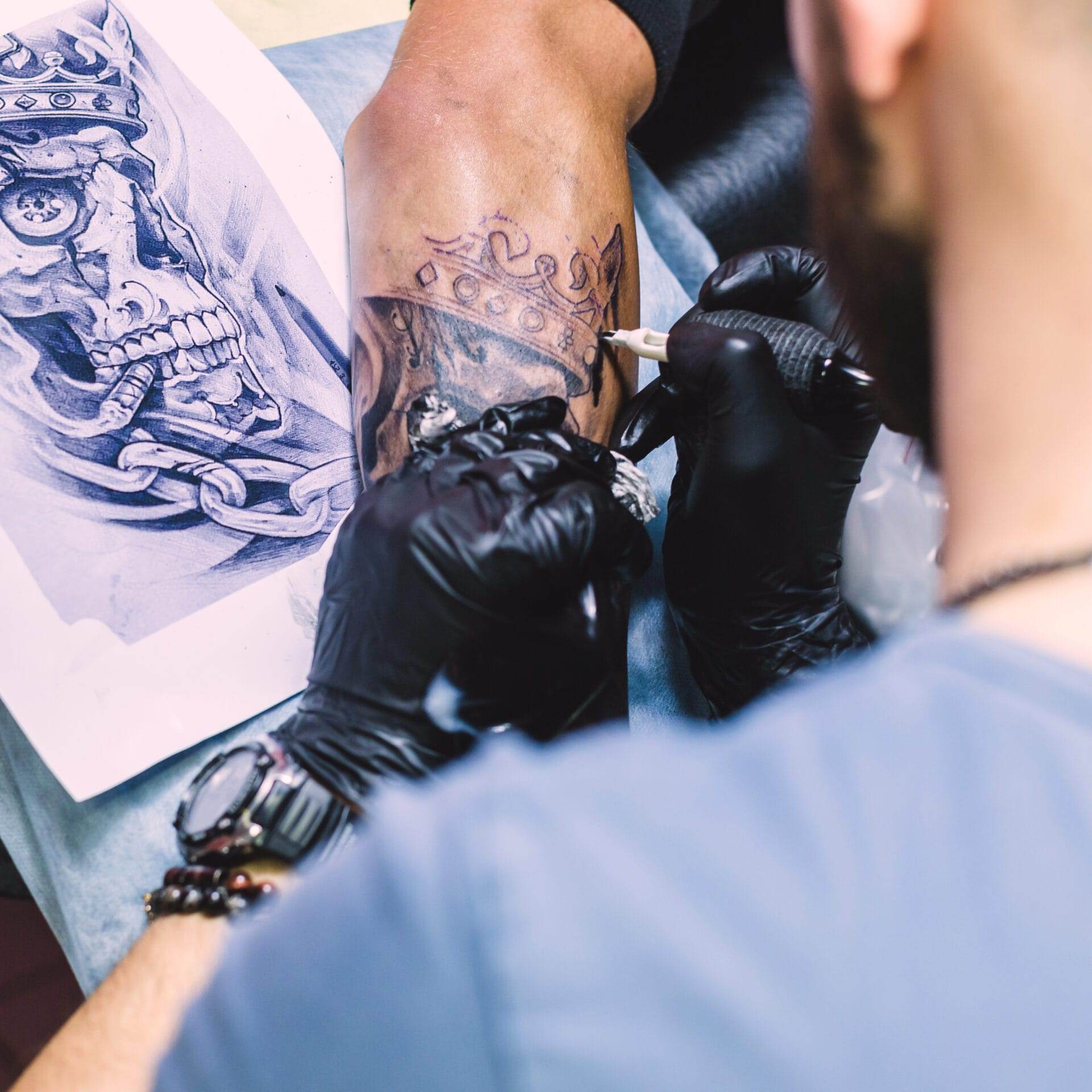
Getting a tattoo is an exciting and personal experience, but it’s important to approach it with the right mindset and preparation. Understanding the tattoo process and taking the necessary steps to prepare your skin can help ensure a smooth and successful experience.
One of the most crucial aspects of getting a tattoo is choosing a reputable and experienced tattoo artist. The quality of the work and the overall safety of the process depend heavily on the artist’s skills and attention to detail. It’s essential to research local tattoo shops, read reviews, and select an artist who has a proven track record of creating high-quality, well-executed tattoos.
Once you’ve found the right artist, it’s time to discuss your design and placement. This is an opportunity to collaborate with the artist, share your vision, and ensure that the final result aligns with your expectations. The artist may offer suggestions or modifications to the design to enhance its aesthetic appeal and ensure it fits the chosen area of your body.
Preparing your skin is another crucial step in the tattoo process. It’s important to ensure that the area is clean and free of any lotions, oils, or other products that could interfere with the tattoo application. Additionally, avoiding sun exposure in the days leading up to the appointment can help prevent any potential complications or discoloration during the healing process.
Key Takeaways
- Preparing for the Tattoo: Expect some discomfort and plan for proper aftercare.
- The Tattoo Process: Understand the steps involved and communicate with your artist.
- Immediate Aftercare: Keep your new ink protected and clean to promote healing.
- Dealing with Swelling, Redness, and Irritation: Expect some discomfort and follow aftercare instructions.
- Embracing the Healing Process: Follow tips for a smooth recovery and monitor for any signs of infection.
The Tattoo Process: A Step-by-Step Guide
The tattoo process begins with an initial consultation, where you’ll have the opportunity to review the design and placement with your artist. This is the time to address any concerns or questions you may have, ensuring that you’re both on the same page and that the final result will meet your expectations.
During the actual tattooing, the artist will use a specialized tattoo machine to apply the ink to your skin. The technique and approach may vary depending on the artist’s style and the complexity of the design, but the overall process typically involves the artist carefully tracing the outline of the design and then filling in the desired colors and shading.
While the tattoo process can be uncomfortable, the artist will work to manage the discomfort and pain as much as possible. They may use various techniques, such as applying a numbing cream or adjusting the pressure and speed of the tattoo machine, to ensure a more comfortable experience for the client.
It’s important to remember that everyone’s pain tolerance is different, and the level of discomfort can vary depending on the location of the tattoo and the individual’s personal threshold. Open communication with the artist and being honest about any concerns or sensitivities can help ensure a more positive and manageable experience.
Immediate Aftercare: Protecting Your New Ink
After the tattoo is complete, the artist will carefully bandage and wrap the area to protect the fresh ink. Proper bandaging is crucial, as it helps to prevent any potential infection or irritation during the initial healing process.
It’s important to avoid removing the bandage too soon, as this can expose the delicate, newly tattooed skin to potential contaminants and disrupt the healing process. The artist will provide specific instructions on when and how to remove the bandage, and it’s essential to follow these guidelines closely.
Once the bandage is removed, the initial cleaning and care of the tattoo begins. Gently washing the area with a mild, fragrance-free soap and warm water is recommended, followed by the application of a thin layer of the recommended ointment or aftercare product. This helps to keep the tattoo moisturized and protected during the early stages of healing.
Cleaning and Caring for Your Tattoo
Establishing a consistent cleaning routine is essential for the long-term health and appearance of your new tattoo. This typically involves gently washing the area with a mild, fragrance-free soap and warm water, being careful not to scrub or irritate the skin.
Choosing the right aftercare products is also crucial. Moisturizers and ointments specifically formulated for tattoo care can help keep the tattoo hydrated and promote healthy healing. It’s important to avoid using harsh soaps, lotions, or other products that could potentially dry out or irritate the tattoo.
Maintaining proper hydration is key during the healing process. Applying a thin layer of the recommended aftercare product regularly can help ensure that the tattoo stays supple and healthy, preventing excessive dryness or scabbing.
Dealing with Swelling, Redness, and Irritation
| Week | Healing Process |
|---|---|
| Week 1 | Keep the tattoo covered with a bandage for the first 24 hours, then switch to a fragrance-free lotion to keep the area moisturized. |
| Week 2 | The tattoo may start to peel and itch, but it’s important not to scratch it. Continue to moisturize and avoid direct sunlight. |
| Week 3 | The tattoo should be mostly healed, but continue to moisturize and avoid soaking it in water, such as swimming or hot tubs. |
| Week 4 | The tattoo should be fully healed, but it’s still important to protect it from the sun and keep it moisturized to maintain its vibrancy. |
It’s normal for a new tattoo to experience some degree of swelling, redness, and irritation during the healing process. These are typically signs of a healthy, healing tattoo, and they should subside within the first few days or weeks.
However, it’s important to be able to differentiate between normal and problematic reactions. Increased redness, swelling, or pain that persists or worsens may be a sign of an infection or other complication, and it’s crucial to address these issues promptly.
Applying cold compresses can help alleviate discomfort and reduce inflammation, while avoiding excessive touching or irritation of the tattoo can help prevent further complications. If the symptoms persist or worsen, it’s important to consult with the tattoo artist or a healthcare professional to ensure proper treatment and prevent any long-term issues.
Maintaining Moisture and Preventing Scabbing
Keeping the tattoo hydrated is essential for a smooth and successful healing process. Regularly applying the recommended moisturizers and ointments can help prevent the tattoo from drying out and forming unsightly scabs.
Over-drying the tattoo can lead to excessive flaking and scabbing, which can potentially compromise the final appearance of the artwork. It’s important to find the right balance, ensuring the tattoo stays supple and healthy without becoming overly saturated.
Gently exfoliating the area can help remove any flaky or peeling skin, allowing the tattoo to continue healing properly. This should be done with a light touch, avoiding any aggressive scrubbing or irritation of the delicate, newly tattooed skin.
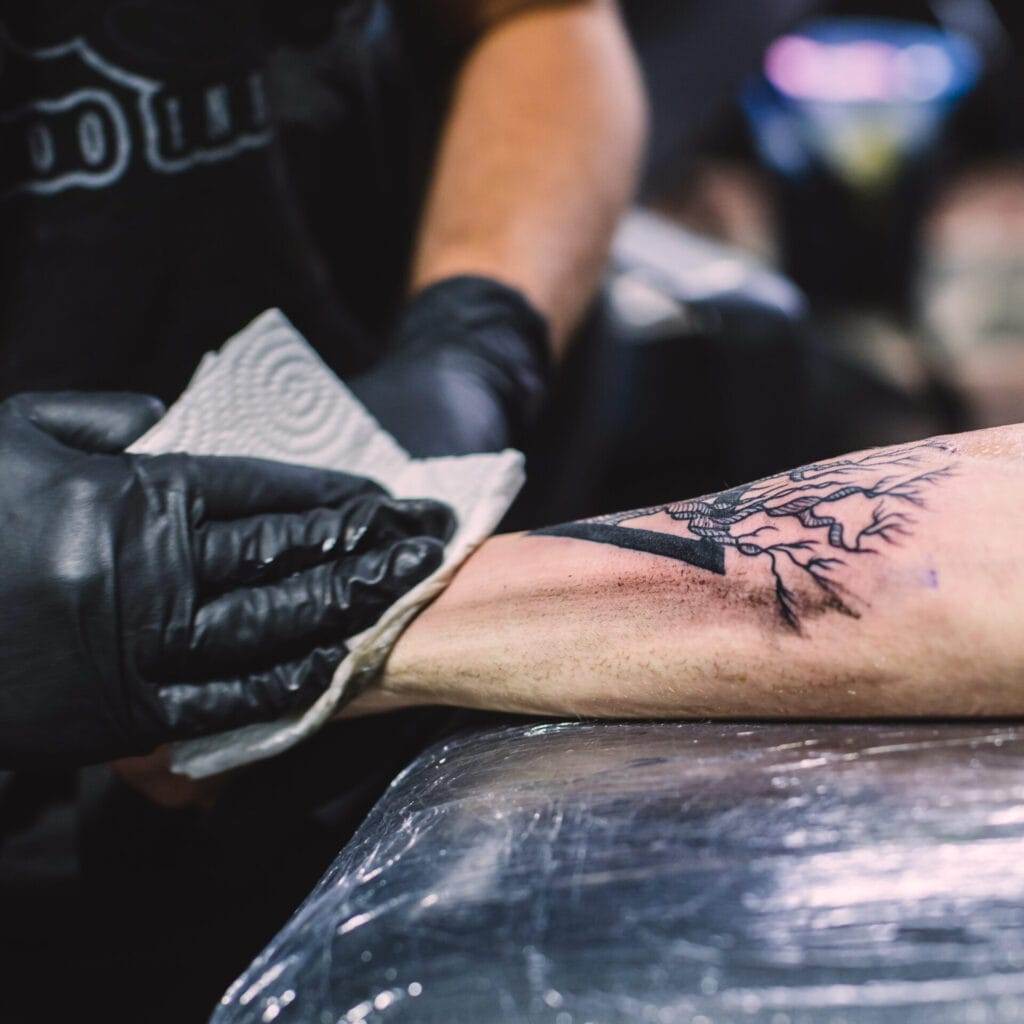
Avoiding Activities that Could Compromise Healing
Protecting the tattoo from sun exposure is crucial during the healing process. Exposure to UV rays can cause the tattoo to fade prematurely and potentially lead to discoloration or other complications. Covering the tattoo when outdoors and using a high-quality, fragrance-free sunscreen can help prevent these issues.
Additionally, it’s important to refrain from any strenuous activities or physical exertion that could cause irritation or damage to the tattoo. Allowing the tattoo to heal properly without excessive movement or friction is essential for maintaining the integrity of the artwork and ensuring a successful outcome.
Monitoring for Infection and Seeking Medical Attention
While proper aftercare and hygiene can help prevent infections, it’s important to be vigilant and monitor the tattoo for any signs of potential issues. Increased redness, swelling, pain, or the presence of pus or unusual discharge may be indicators of an infection that requires prompt attention.
If you notice any concerning symptoms, it’s crucial to contact the tattoo artist or a healthcare provider as soon as possible. They can assess the situation, provide appropriate treatment, and ensure that any complications are addressed in a timely manner to prevent further issues.
Seeking professional medical care is essential, as ignoring or attempting to self-treat an infection can lead to more serious complications and potentially compromise the final appearance and integrity of the tattoo.
Embracing the Healing Process: Tips for a Smooth Recovery
Approaching the tattoo healing process with a positive mindset can go a long way in ensuring a smooth and successful recovery. Celebrating the new artwork and embracing the journey of watching it transform and heal can help make the experience more enjoyable and rewarding.
As the tattoo heals, it’s fascinating to observe the changes and transformations it undergoes. From the initial redness and swelling to the gradual fading of the scabs and the emergence of the final, vibrant design, the healing process is a true testament to the resilience and adaptability of the human body.
Sharing this experience with friends and loved ones can also be a meaningful way to commemorate the new tattoo. Whether it’s discussing the design, the healing process, or the personal significance of the artwork, engaging with others can help make the journey even more fulfilling and memorable.
FAQs
What is Redemption Ink?
Redemption Ink is a renowned tattoo studio and guesthouse located in a vibrant neighborhood. It is known for its talented artists and welcoming atmosphere.
What should I expect during the first few weeks after getting a tattoo at Redemption Ink?
During the first few weeks after getting a tattoo at Redemption Ink, you can expect some initial discomfort, redness, and swelling around the tattooed area. It is important to follow the aftercare instructions provided by the studio to ensure proper healing.
How should I care for my new tattoo during the first few weeks?
It is important to keep your new tattoo clean and moisturized during the first few weeks. Redemption Ink will provide specific aftercare instructions, which may include washing the tattoo gently with mild soap, applying a thin layer of ointment, and avoiding direct sunlight and swimming.
What are some common signs of infection to look out for during the first few weeks after getting a tattoo?
Common signs of infection to look out for during the first few weeks after getting a tattoo include excessive redness, warmth, swelling, pus, or prolonged pain around the tattooed area. If you experience any of these symptoms, it is important to seek medical attention.
When can I expect my tattoo to be fully healed?
The healing process for a tattoo can vary from person to person, but generally, it takes about 2-3 weeks for the initial healing to occur. However, it may take several months for the tattoo to fully settle and for the skin to return to its normal texture and appearance.

